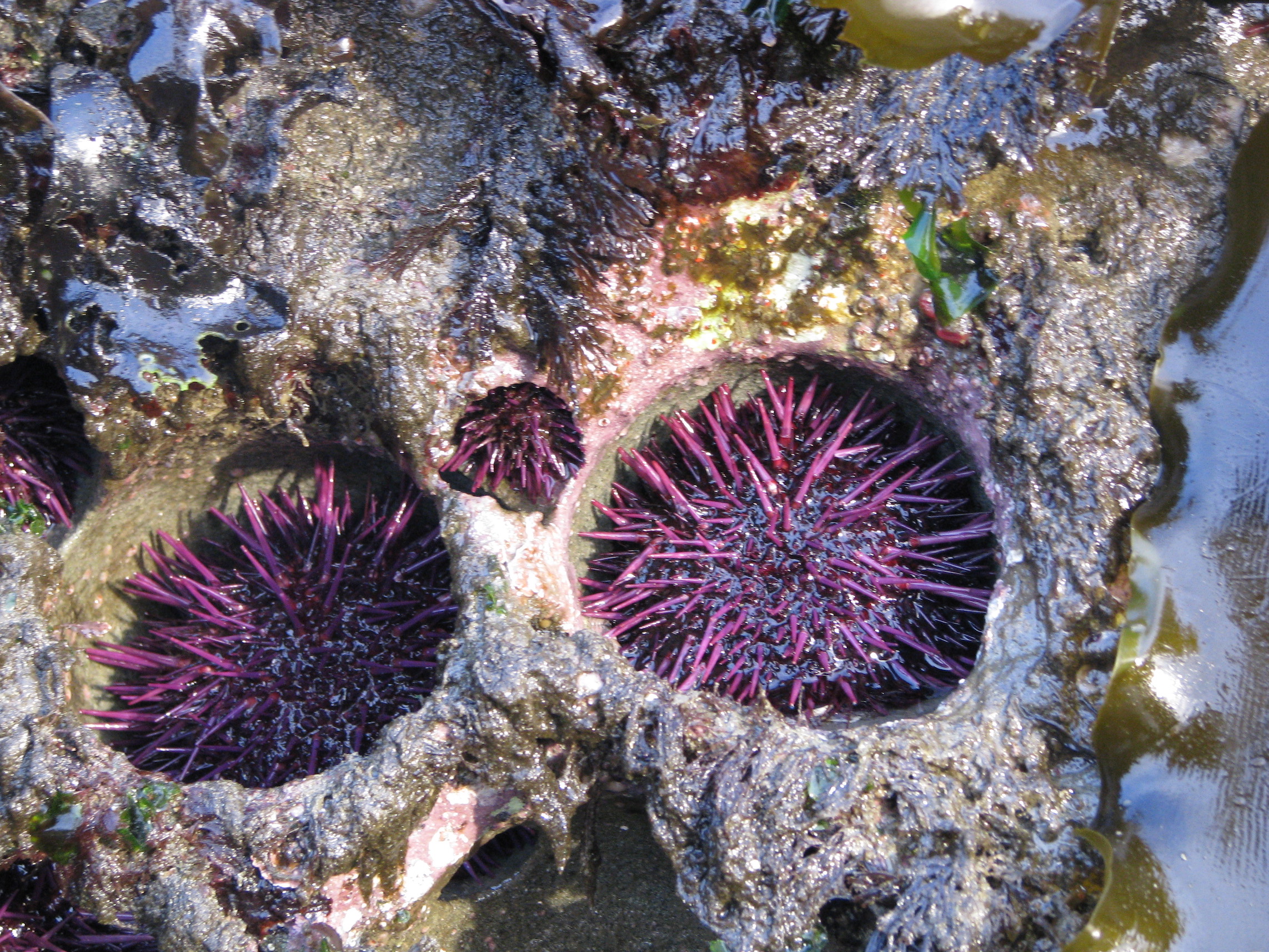
Sea urchins erode reef rock, may pose a threat of bioerosion
Sea urchins are spiny marine creatures that live in high densities on rocky temperate reefs. While also a hazard to barefoot beachgoers, researchers have reason to believe that these creatures may be a hazard to the reefs themselves. Although no experimental data had yet proved it, scientists had long wondered if urchins excavate the rock they reside on through their grazing activity. If so, they may pose a significant bioerosion threat to temperate reefs.
The authors of a new study published in the open-access journal PLOS ONE investigated this question through monitoring purple sea urchins (Strongylocentrotus purpuratus) on flattened rock surfaces in a lab. Using fine- and medium-grain sandstone, mudstone, and granite rocks taken from Californian reef sites naturally occupied by sea urchins, the researchers compared their lab measurements to field measurements.
Their results showed that sea urchins did visibly excavate the rock in the laboratory experiment. Excavation rates varied greatly by rock type – each urchin excavated roughly 32 grams of medium-grain sandstone in the course of a year, but granite excavation was 37 times slower. However, these differences were reflected in field measurements as well. The minor differences were that the granite pits were shallower and the sea urchins were flatter than their sandstone counterparts.
The researchers combined the laboratory rates with urchin density measurements, and estimate that on medium-grain sandstone reefs, urchins might produce almost 200 tons of sediment per hectare per year. Although excavation rates in the field might differ greatly from laboratory rates. Still, the authors believe that urchin-mediated bioerosion could be a significant factor in temperate reef coastal erosion.
“What shocked us was the rate of bioerosion – particularly on sandstone,” says lead author Michael Russell of Villanova University. “In the course of feeding, sea urchins scrape the rock surface using their self-sharpening, regenerating teeth, which act as ‘rock picks’ and this process results in the excavation of pits.” While it may seem minor on an individual level, these small scrapings add up with high-density populations of urchins over time. The authors believe this issue is worth further investigation in order to help maintain our reefs.
—
By Connor Ertz, Earth.com Staff Writer
Image Credit: Michael Russell













